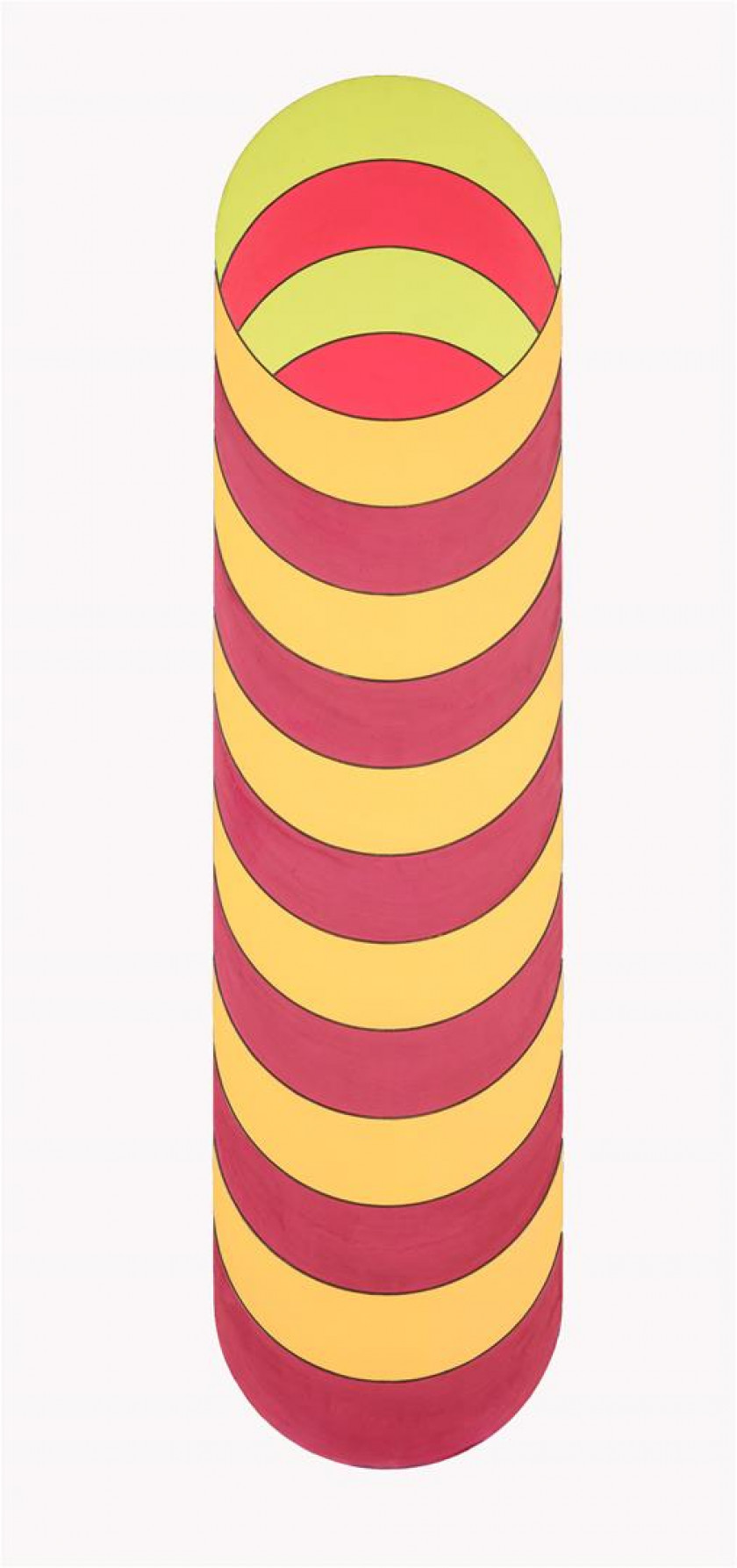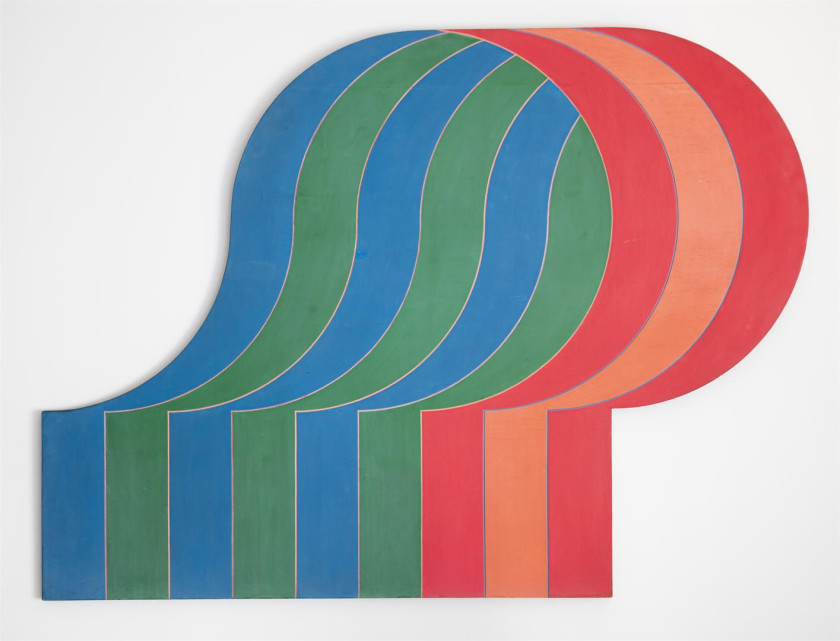Sem título [Untitled]
painting


1968
Industrial oil on plywood
201 x 50 x 2,5 cm
After an initial figurative phase, a trip to Europe in 1966 marked a change in Jorge Pinheiro's production, stimulating a stage of work based on the historical tradition of European abstraction and the international movements that emerged after the Second World War, namely the researches of the Parisian group Abstraction-Création, the aesthetic proposals of Op Art and the theoretical principles of Gestalt. Thus begins the first period of abstraction in the painter's work, marked by the conception of retinal compositions structured from geometric patterns and modules, and in which the notions of cadence, succession, rhythm and repetition are explored as originators of forms and visual effects. This search for abstraction is linked to the exploration of optical effects, also being reinforced by the conception of painting as an object and not as a mere two-dimensional representation. This characteristic would be reflected in the previous cut-out of the supports.
Integrated into this production phase, this painting is characterised by a strongly geometric compositional construction. The shape, which is reminiscent of a cylinder design, is outlined by the cut in the wooden support and is structured by curved bands of pure and saturated colours, defined by contour lines. The chromatic scheme with secondary and complementary hues gives a three-dimensional effect to the composition, in a reduced or planned volumetry that emphasises the painting's objectivity. The cadence of the stripes and the proportional relationship between the two chromatic areas stimulate the observer's gaze to travel ceaselessly through the composition in a vertical movement, eliminating the centre of gravity of the painting and giving it a strong balance and unity.
Joana Baião
